Guidelines for Exercising With Varicose Veins
Author: StrideCare Internal Team
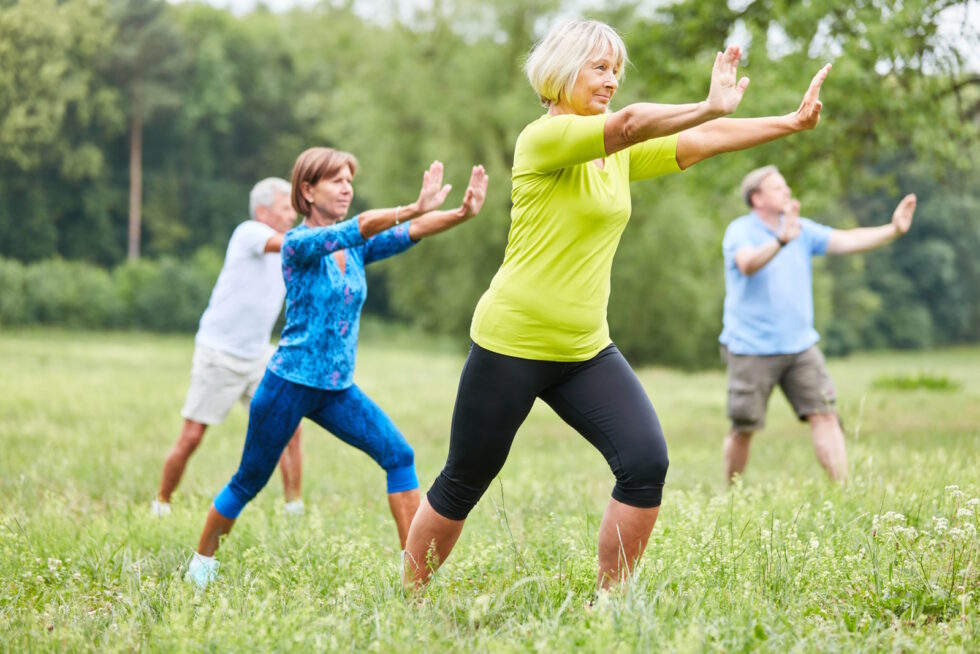
Exercising With Varicose Veins: An Overview
What Are Varicose Veins?
Varicose veins affect roughly 25 million men and women in the United States. That means they are a very common condition. It’s also important to note that not all people who have varicose veins experience pain or face a life-threatening situation. But vein problems can progress depending on the person and the factors involved—such as having a job that requires you to sit or stand for long periods, excessive smoking, or heredity.
Varicose veins are typically caused by malfunction and damage of the valves in veins of the lower half of the body. Blood flows in the wrong direction (reflux), leading to pooling, backed-up blood. As a result, varicose veins that start off as small and seemingly harmless spider veins multiply, bulge, stretch, and enlarge.
This can lead to a variety of painful symptoms, including but not limited to:
- Achy or heavy feeling in your legs
- Sudden or excessive swelling
- Throbbing and burning sensations in the legs and feet
- Pain that worsens after standing for long periods
- Muscle cramps
- Itchy skin
- Bruising and skin discoloration around a varicose vein
If you don’t seek help from a specialist who can provide treatment for varicose veins, the appearance of your legs and the symptoms mentioned above may worsen over time and lead to vein disease.
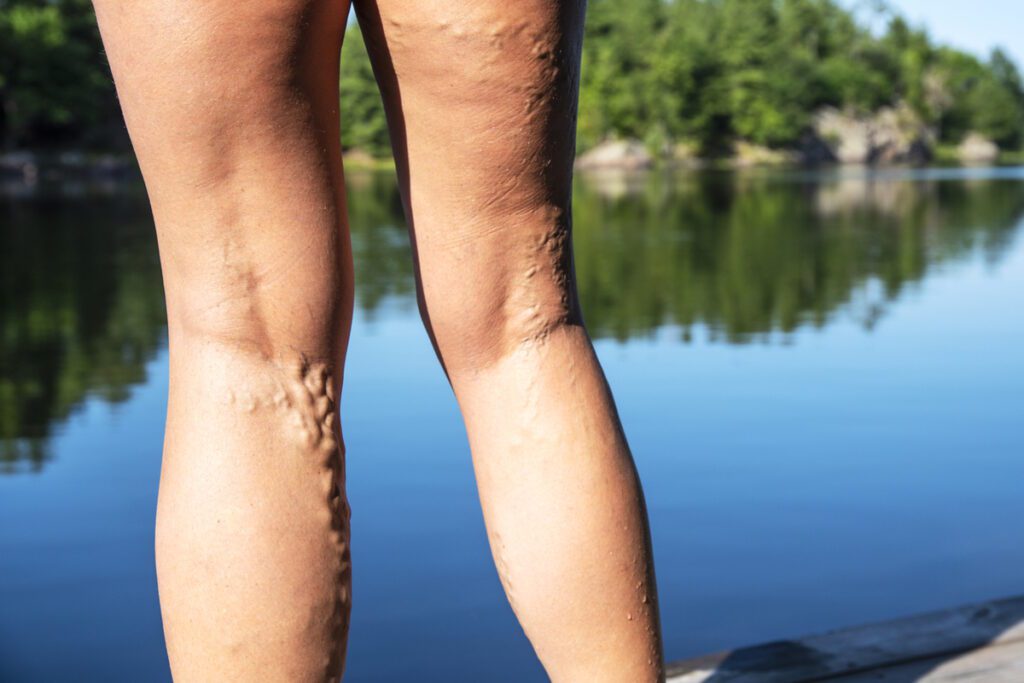
Exercising With Varicose Veins
Fitness solutions for people with varicose veins can improve blood circulation throughout the body, helping veins that are currently struggling to push blood do so more efficiently. Granted, exercise alone won’t cure varicose veins. But even 30-45 minutes of exercise each day can improve symptoms and reduce your risk of developing more.
Exercising regularly can also help with:
- Increase energy levels — Staying physically active keeps your energy levels higher and gives you the boost you need to maintain consistency as you work to diminish symptoms of your varicose veins.
- Boost endorphins — Endorphins are a feel-good hormone and act as a natural painkiller for a variety of body aches and pains such as leg pain. Exercise increases your heart rate and stimulates endorphin production.
- Healthy Body Mass Index — A healthy BMI is between 18.5 and 25. Obesity places additional stress on your circulatory system, causing your blood vessels to work harder to return blood to your heart.
6 Exercise Tips for Varicose Veins
For adults, the American Heart Association recommends at least 150 minutes per week of moderate-intensity aerobic activity and to increase the amount and intensity of those exercises gradually over time. This improves blood flow throughout the body and promotes healthy veins. But the first step with any exercise routine is to listen to what your body is telling you. If it’s too much, scale back. If the routine is causing pain, stop and reassess your approach.
Also, it’s important to avoid intense or vigorous exercises such as hard running and heavy weightlifting. While these are great forms of exercise, they can cause straining that adds pressure to veins in the legs. As a result, your symptoms could get worse.
But whatever you do, don’t give up on exercise entirely. Start by focusing on these exercises, all of which promote cardiovascular conditioning and weight loss.
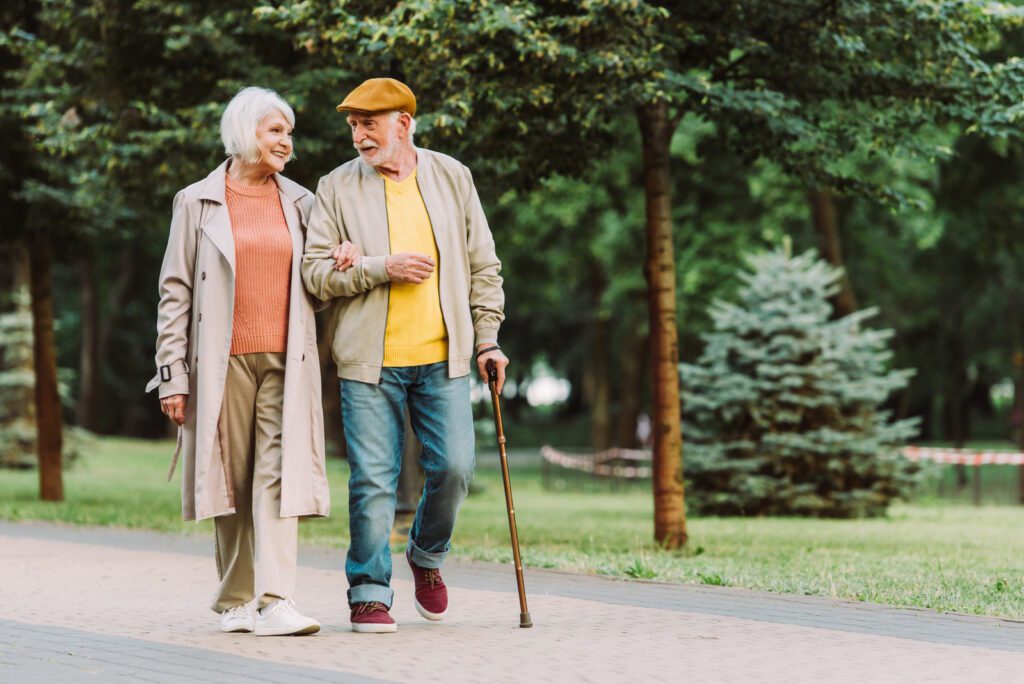
- Walking
Not only is walking a great exercise to help with or prevent varicose veins, but it is a great activity to start with because it is typically safe and beneficial for people of all ages and any fitness level. According to the CDC, more than 145 million adults walk as part of a physically active lifestyle. Moreover, the National Institutes of Health say that adults who took 8,000 or more steps a day had a reduced risk of death over the following decade than those who only walked 4,000 steps a day.
- Yoga
This low-impact, total-body exercise improves strength, balance, and flexibility, increases your energy and mood, and promotes weight loss. And for varicose veins, in particular, it can help stimulate blood flow throughout the body, reduce swelling, and manage pain.
- Swimming, biking, and light jogging
All three of these exercise routines are low-impact and easy on the joints. They also raise your heart rate and help maintain a healthy weight. Swimming, in particular, lessens the effect of gravity on lower leg veins and is one of the few low-impact exercises out there that utilizes all muscle groups.
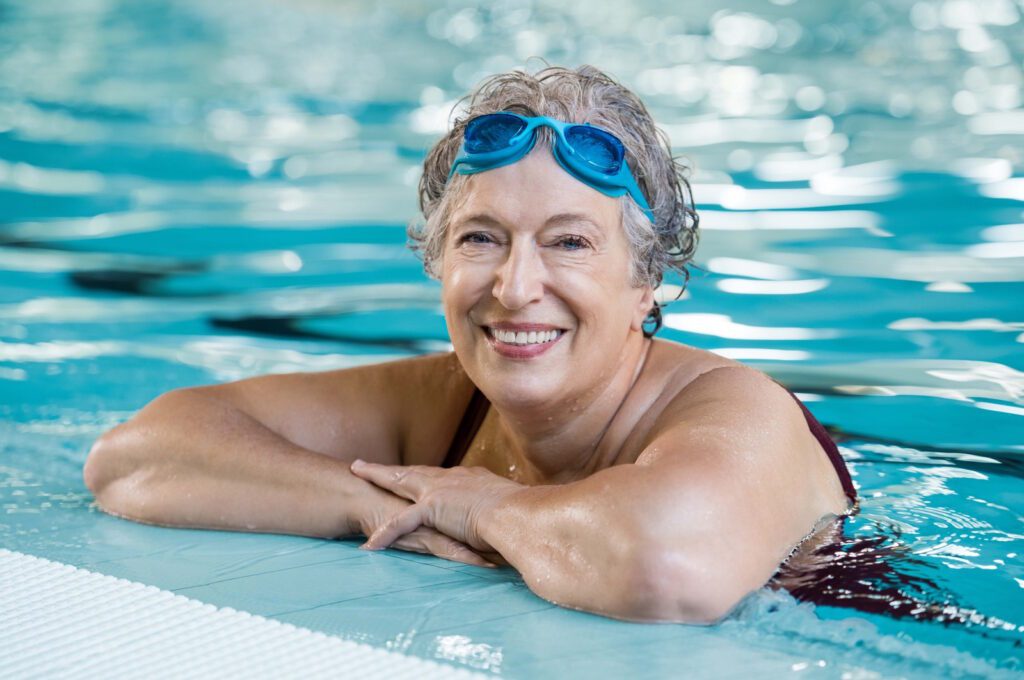
- Simple leg elevation
Studies consistently show that elevating legs for 30 minutes at least four times a day can decompress lower extremity veins and improve symptoms of painful legs. Elevating legs uses gravity to your advantage by allowing blood that has pooled in your extremities to drain away.
- Light weight training
It is best to avoid any weight training that involves excessive straining or using heavy weights. Doing so places pressure on the veins and can make your varicose veins worse. With that said, a combination of light weights and higher repetitions or even bodyweight exercises can be beneficial.
- Stretching
Granted, some stretching movements may be difficult to perform if you have severe varicose vein symptoms. But lightly stretching your legs, feet, and calves at a slow pace is achievable and is extremely beneficial when it comes to improving circulation and increasing flexibility.
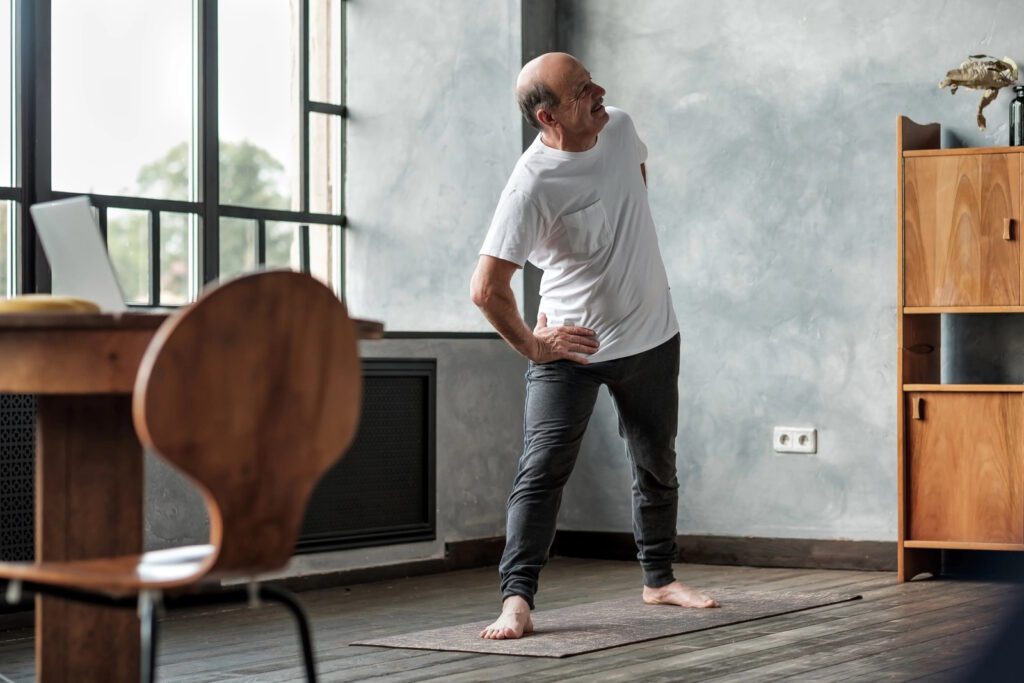
While regular exercise helps with varicose veins, do not rely on physical activity alone. Focus on eating a healthy diet, avoiding smoking, and staying away from situations where you are forced to sit or stand for too long. Being mindful of the signs and symptoms of varicose veins can help you ease the symptoms associated with vein disease.
Stridecare Wants To Help With Your Varicose Veins
Hopefully by reading this article, the importance of healthy veins and limiting symptoms of varicose veins is officially on your radar. Exercise is one of the best ways to keep your body moving, improve cardiovascular conditioning, lose weight, and decrease the symptoms you’re experiencing. Can it eliminate varicose veins or help you avoid them entirely? No. But a body in motion tends to stay in motion, and choosing a consistent exercise routine will help you manage potential vein issues later in life.
If exercise doesn’t work, or your condition is advanced, your vascular specialist may suggest minimally invasive treatment options such as radiofrequency ablation, microfoam ablation, or sclerotherapy. The thing to remember here about these treatment options is that technology has advanced considerably to the point where reoccurrence rates are incredibly low, and treatments are considered to be “walk-in, walk-out procedures” in most cases.
Our expert doctors and highly skilled team members at Stridecare are proud to offer solutions for a variety of vein and artery diseases that might be dramatically impacting your quality of life. We only utilize the latest technologies and minimally invasive procedures.
Prior to starting any new treatment or questions regarding a medical condition, always seek the advice of your doctor or other qualified health provider. This information is not a substitute for professional medical advice.
StrideCare serves the South Texas area including Houston, San Antonio, Austin, Round Rock, Bastrop, Brushy Creek, Cedar Park, Converse, Georgetown, Hutto, Kyle, Leander, Marble Falls, New Braunfels, Pasadena, Pearland, Pflugerville, San Marcos, Schertz, Houston, Sugar Land, Katy, Webster, Bay City, Clear Lake, Lake Jackson, The Woodlands, Universal City, Spring, Kingwood, Stafford, Conroe, Texas City, Cypress, League City, Bellaire, and more.


